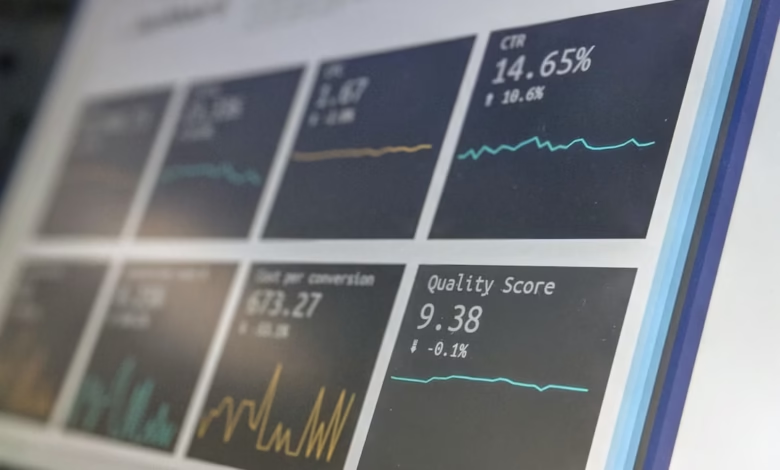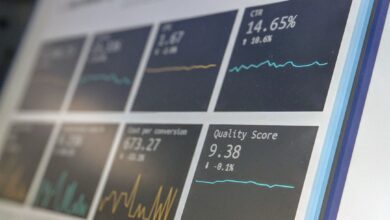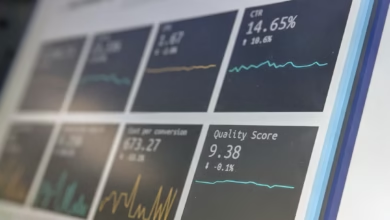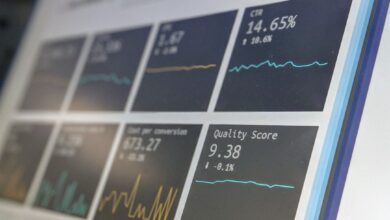Mastering Technical Analysis: Essential Charts and Strategies for Successful Trading Across Markets

In the fast-paced world of trading, understanding the nuances of market movements is crucial for success. Technical analysis, a method that employs charts and patterns to forecast future price action, has become an essential tool for traders across various markets, including stock trading, forex trading, options trading, and more. By analyzing historical price data and utilizing key indicators, traders can identify trends and make informed decisions that enhance their trading strategies. This article will delve into the fundamentals of technical analysis, exploring critical charts and patterns that can lead to successful trades. Additionally, we will discuss essential trading strategies for different types of trading, such as day trading, swing trading, and crypto trading, while emphasizing the importance of trading psychology and risk management in achieving consistent results. Whether you are engaged in high-frequency trading or exploring the realms of derivatives trading and CFD trading, mastering technical analysis is vital for navigating the complexities of the financial markets.
- 1. Understanding Technical Analysis: Key Charts and Patterns for Successful Trading
- 2. Essential Trading Strategies: How to Utilize Technical Analysis Across Different Markets
- 3. The Role of Trading Psychology and Risk Management in Effective Technical Analysis
1. Understanding Technical Analysis: Key Charts and Patterns for Successful Trading
Understanding technical analysis is essential for traders looking to forecast market movements effectively. By examining historical price data through various charts and patterns, traders can gain insights that inform their trading strategies. This section will explore key charts and patterns that can enhance your trading experience across different markets, including stock trading, forex trading, and crypto trading.
One of the most fundamental tools in technical analysis is the price chart. There are several types of charts that traders commonly use:
– **Line Charts:** These provide a simple view of price movements over time, connecting closing prices. They are great for getting a quick overview of market trends.
– **Bar Charts:** Offering more detail, bar charts display the open, high, low, and close prices for a specific time period. This format allows traders to gauge market volatility and price action.
– **Candlestick Charts:** Similar to bar charts, candlestick charts provide a visual representation of price movements. Each "candlestick" shows the open, high, low, and close prices within a defined period. Candlestick patterns, like dojis and hammers, can signal potential reversals or continuations, making them invaluable for day trading, swing trading, and even high-frequency trading strategies.
In addition to charts, recognizing patterns plays a crucial role in technical analysis. Some essential patterns to be aware of include:
– **Head and Shoulders:** This pattern signals a potential reversal in trend and is commonly used in various trading strategies, including options trading and derivatives trading.
– **Double Tops and Bottoms:** These patterns indicate potential trend reversals and are significant for traders engaging in scalping and margin trading.
– **Triangles:** Ascending, descending, and symmetrical triangles reflect market consolidation, offering insights into breakout opportunities, which can benefit traders across various online trading platforms.
– **Flags and Pennants:** These continuation patterns suggest that the current trend is likely to resume after a brief pause, making them valuable for traders involved in futures trading and commodities trading.
Effective technical analysis is not solely about recognizing patterns; it also integrates risk management principles. Traders must assess their risk tolerance and determine appropriate stop-loss levels to protect against unforeseen market movements. This aspect is vital in all forms of trading, from algorithmic trading to copy and social trading, where emotional factors can lead to impulsive decisions.
Ultimately, mastering technical analysis requires a blend of knowledge, practice, and trading psychology. By combining the insights gained from charts and patterns with fundamental analysis, traders can develop robust trading strategies that enhance their chances of success in the dynamic financial markets. Whether you're engaged in index trading, binary options, or arbitrage trading, understanding technical analysis is a cornerstone of effective market analysis and trading performance.
2. Essential Trading Strategies: How to Utilize Technical Analysis Across Different Markets
Technical analysis is a powerful tool in the arsenal of both novice and experienced traders, as it allows for the forecasting of market movements by interpreting charts and patterns. When applied across various markets—such as stock trading, forex trading, and crypto trading—traders can enhance their trading strategies and improve their decision-making processes. Here are some essential trading strategies that utilize technical analysis effectively across different trading environments.
1. **Trend Following**: One of the most popular strategies in technical analysis is trend following. This approach involves identifying the direction of the market—upward (bullish), downward (bearish), or sideways—and trading in that direction. For instance, in stock trading and commodities trading, traders can use moving averages and trend lines to confirm the trend and place their trades accordingly.
2. **Support and Resistance Levels**: Understanding support and resistance levels is crucial in all trading forms, including day trading and swing trading. Traders can look for price levels where the market has historically reversed or stalled. By identifying these levels on charts, traders can set entry and exit points, making informed decisions to maximize their profits while minimizing risks.
3. **Chart Patterns**: Recognizing chart patterns, such as head and shoulders, flags, and triangles, can provide valuable insights into potential price movements. These patterns are applicable across various markets, including options trading and futures trading. For example, a bullish flag pattern in forex trading may indicate a continuation of an upward movement, prompting traders to enter long positions.
4. **Indicators and Oscillators**: Utilizing indicators like the Relative Strength Index (RSI), Moving Average Convergence Divergence (MACD), and Bollinger Bands can help traders gauge market momentum and volatility. These tools are beneficial for different trading styles, from scalping in high-frequency trading to longer-term strategies like ETF trading and derivatives trading.
5. **Risk Management**: Essential to any trading strategy, effective risk management must accompany technical analysis. Traders should determine their risk tolerance and use stop-loss orders to protect against unforeseen market movements. This practice is particularly important in leveraged trading environments, such as margin trading and CFD trading, where potential losses can be amplified.
6. **Psychological Factors**: Trading psychology plays a significant role in the effectiveness of technical analysis. Traders must remain disciplined and manage their emotions to avoid impulsive decisions that can lead to losses. Incorporating a solid trading plan that includes both technical and fundamental analysis can help traders stay focused on their strategies, whether they are engaged in copy trading, social trading, or arbitrage trading.
By understanding and applying these essential trading strategies through technical analysis, traders across various markets can enhance their market analysis capabilities, improve their decision-making processes, and ultimately increase their chances of success in the ever-evolving trading landscape.
3. The Role of Trading Psychology and Risk Management in Effective Technical Analysis
Effective technical analysis goes beyond simply reading charts and recognizing price patterns; it also incorporates the critical aspects of trading psychology and risk management. Understanding these elements can significantly enhance a trader's ability to forecast market movements and make informed decisions across various trading avenues, such as stock trading, forex trading, options trading, and even crypto trading.
Trading psychology refers to the emotional and mental state that influences a trader's decisions. Factors such as fear, greed, and overconfidence can lead to impulsive trading actions that deviate from established trading strategies. For instance, during periods of high volatility, such as in day trading or scalping, traders may succumb to panic selling or premature buying, undermining their technical analysis efforts. Cultivating a disciplined mindset and adhering to a well-defined trading plan can help mitigate these psychological pitfalls.
Risk management is another foundational component of effective technical analysis. It involves implementing strategies to protect capital while maximizing potential gains. Traders must evaluate their risk tolerance and set appropriate stop-loss orders, especially in high-leverage environments like margin trading or futures trading. By defining the maximum acceptable loss on each trade, traders can minimize the impact of unfavorable market movements.
Moreover, incorporating risk management techniques, such as position sizing and diversification across various markets—whether in commodities trading, index trading, or derivatives trading—can help traders maintain a balanced portfolio. This is especially crucial for those engaging in algorithmic trading or high-frequency trading where market conditions can change rapidly.
In conclusion, integrating trading psychology and risk management into technical analysis not only enhances forecasting accuracy but also fosters a more sustainable trading approach. By ensuring that emotional responses do not dictate trading decisions and by maintaining a robust risk management strategy, traders can improve their overall performance in the dynamic world of online trading platforms.
In conclusion, mastering technical analysis is crucial for any trader looking to navigate the complexities of the financial markets, whether it's stock trading, forex trading, options trading, or crypto trading. By understanding key charts and patterns, traders can forecast market movements more effectively and devise robust trading strategies tailored to various market conditions, including day trading, swing trading, and scalping.
As we’ve discussed, the integration of trading psychology and risk management is vital for ensuring long-term success. Traders must remain disciplined and aware of their emotional responses to market fluctuations, while also employing sound risk management practices to protect their capital. This is particularly important in high-frequency trading and algorithmic trading, where rapid decision-making can influence outcomes significantly.
Additionally, incorporating both technical and fundamental analysis can provide a more holistic view of market dynamics, allowing traders to make informed decisions across various sectors, including commodities trading, index trading, and derivatives trading. Online trading platforms continue to evolve, offering tools that facilitate effective market analysis and enhance trading strategies, from copy trading and social trading to leveraging CFD and ETF trading.
Ultimately, the journey of a trader involves continuous learning and adaptation. By honing your skills in technical analysis and understanding its application in different trading environments, you position yourself to capitalize on opportunities and navigate the inherent risks of the financial markets. Embrace these strategies, and you will be better equipped to achieve your trading goals, regardless of the market you choose to explore.





